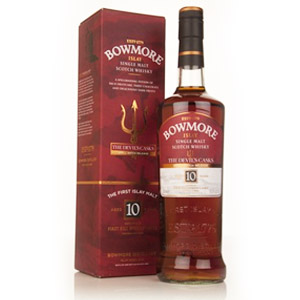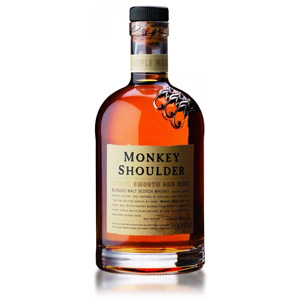Tullibardine, located in the heart of the Scottish Highlands in Perthshire, began distilling in 1949. Like most Scottish distilleries, it spent a period of time mothballed in the nineties and changed hands several times. It is currently owned by French company Picard Vins & Spiritueux, the firm’s only distillery. Also like many whisky brands trying to reinvent itself in the modern era, the bottles have undergone a redesign in 2013 and the core range is now stocked with NAS expressions, including the 225 (Sauternes finish), 228 (Burgundy finish), and this one, the 500 Sherry Finish. The company also bottles a 15-year and several older age-stated expressions.
The 500 Sherry Finish is matured for an undisclosed period of time in first-fill bourbon casks before being filled into 500-liter (hence the name) Pedro Ximenez sherry butts for one year. The final whisky is bottled at 43% ABV, and is both chill filtered and (probably) has added spirit caramel for coloring. (Sigh.)
Nose: A piercing vinegar note – like an expired wine – with a significant sulphur note. Dry, acidic, and with the fruit notes (green apple, pear, lemon) marred by the vinegar. There is a very thin layer of almost-sweet malt, which is hidden below the weird wine notes.
Palate: Syrupy body. Much sweeter on the tongue, with a nice pear drop flavor, lemon peel, and white cherries. The malt is still far in the background. There is also a suggestion of blanched almonds.
Finish: Medium-long. Still acidic, but the sweetness is in better balance now. Raw wildflower honey, pale malt, and not even a hint of bitterness. Fades slowly without evolving further.
With Water: A few drops of water don’t seem to help matters, but combined with a rest in the glass the situation improves: There is a lot more sweetness (vanilla) and a lot less sour wine. If you have a bad initial experience like I did, definitely try adding some water and five minutes of rest time.
Overall: Huh. This would be a passably interesting single malt if it weren’t for the severely off-putting vinegar / sour wine notes on the aroma. I’m not usually one to notice sulphur notes in whisky, but even I couldn’t escape it here. Things improve once you get the liquid past your nose, but the experience is unalterably dampened by that point. This could be a personal taste thing, and someone else who likes strong tart notes in whiskies might adore this dram, so if you run across an inexpensive way to try it out, see if you have a different experience than I did. It’s also – as always – possible that I encountered a sub-standard batch.
Note: Some of this whisky’s characteristics remind me of a failed Bruichladdich store bottling that I tasted many years ago, which was aged in a faulty Chenin Blanc cask which had colonized the whisky with the charming aroma of baby vomit. This whisky reminds me of that, and it’s not a note that I encounter often.









My primary experience with Tulli comes largely from their table at one of the whiskey shows a year or so ago. I skipped right over the NAS fluff and focused my attention on the 20 year & 25 year expressions. I preferred the former (ex bourbon) to the latter (bourbon + sherry). The only Tulli I own is called “The Murray”. It includes an age statement (12 year), a vintage (2005 to 2017 in my case), is non-chill filtered and naturally colored, and is bottled at cask strength … check, check, and check. As a bonus it comes in a lovely black magnetic folding box that suggests it should cost more than the $70 I paid for it. Recommended.